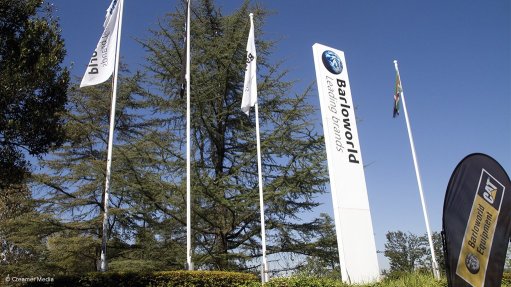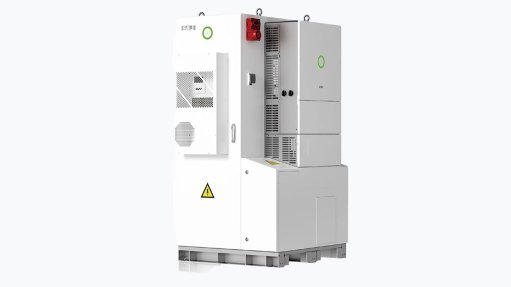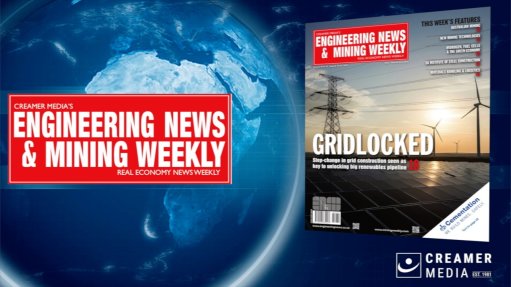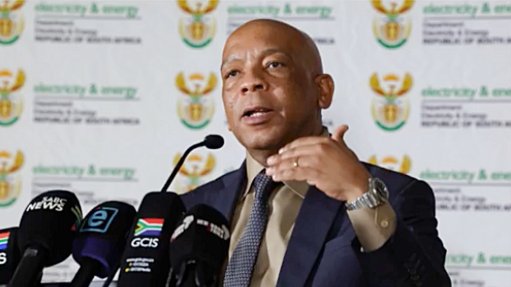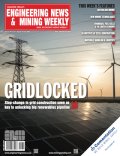Africa’s race to the sun (and other alternatives): Who is winning?
This article has been supplied.
By Shirley Webber, Coverage Head: Resources and Energy, Absa CIB
One of the most emotive subjects in Africa currently is the energy transition from fossil fuels to cleaner energy, with the mining and resources sectors at the sharp end of the debate.
Consider for a moment that South Africa is light years ahead of the rest of the continent in terms of its energy infrastructure and Renewable Energy Independent Power Producer Programme (REIPPP) which has rolled out over 100 viable energy projects. This is undeniably a success story.
At the same time, businesses are coming to a standstill with 5 to 10 hours of power cuts while some power projects from Bid Window 5 are still trying to reach financial close. On top of that, we are facing very real constraints within the transmission and distribution networks, thus indicating that despite the aspiration to succeed, the implementation of solutions is falling short and this needs to be rectified. The IRP 2019 by the DMRE is being implemented though, albeit slowly and there are exciting new initiatives underway such as the energy storage and gas to power programmes. We believe great strides have been made, and we should focus on the positive impact that the renewable programme actually makes.
While South Africa is, for now, the most advanced economy in Africa, it’s important to understand that the broader African continent is seeing potential for the clean energy transition and making itself attractive to foreign investors who are key to funding the renewable drive and energy changing market.
Our research confirms there are many plans in place to see African countries succeed that begs the question: Which of the resource rich countries are in the running for global capital to see their plans come online first? We are looking forward to supporting some of the projects that are on the horizon.
While Egypt’s growth rate is expected to slow from 6.6% in 2022 to 3.4% in 2023, it still compares very favourably to South Africa, which the International Monetary Fund (IMF) forecasts to grow at 1% while some of the more pessimistic analysts believe it could be even less. Egypt is expected to benefit from a number of investment pledges from the likes of the UAE, Saudi Arabia, and Qatar. On the electricity front, there are some similarities between South Africa and Egypt where the Egyptian Electricity Holding Company still dominates the market. Currently 22% of the electricity supplied is via renewables and this is expected to grow to 42% by 2035. There is also significant investment in a nuclear plant and green hydrogen project with a target of 18GW of power to be added by 2032.
Mozambique is a fascinating market to consider. While it holds an electrification rate of just 30%, it has the second highest available capacity after South Africa as an exporter in the South African Power Pool (SAPP). On the other hand, it is set to have the fastest growth in natural gas production in Africa over the coming decade. This will create a strong foundation for gas-fired power projects that are in the pipeline.
Zambia is mineral rich and can expect to see significant investment in the coming years with electricity consumption forecast to grow at 3.9% year on year between 2022 and 2030. The primary risk for Zambia is its significant reliance on hydropower which has been very vulnerable during times of rain and drought. Its rich resource base means that Zambia will attract foreign investment, and this should be supported by additional captive power projects. This will be critical as the mining sector currently consumes over 50% of the generation capacity.
Ghana as a major exporter of gold, oil and cocoa comes with its own unique set of challenges with the Bank of Ghana forced to hold interest rates at elevated levels of around 29% while policy makers grapple with debt restructuring. Despite this, the Solar market in the country is already competitive and Ghana exports electricity into the rest of Africa – both of which can be attributed to policy reforms in the 1980s which drove IPP activity. Given the good potential for clean captive power in commercial and industrial facilities in Ghana, and the relative lack of accessible bank financing, private specialised captive solar PV financing firms have recently entered the market.
Tanzania is a market we are watching closely. It is the third largest producer of gold on the continent, and it constitutes 50% of its exports which is currently enjoying a purple patch thanks to elevated demand. Of recent interest is that the country has been identified as a potential key player in the global Graphite market. With demand for Lithium Iron Ore batteries on the rise, Graphite is a key component that makes Tanzania very interesting. To support this investment opportunity, the under-developed Tanzanian market is expected to add 6GW of renewable energy power by 2025 – this will be a game-changer for the economy.
Africa has the means to start implementing a successful Just Energy Transition over the next decade. There are a myriad of plans in execution to reach this goal, but the question remains: Are there adequate resources and expertise to implement them timeously? There are 54 countries in Africa and each of these come with their own unique energy challenges.
Absa is ready to identify hurdles in their race and combine experience and expertise to create an enabling environment for the resource operators in all of Africa to succeed. When we get this right, this becomes a win-win situation for all stakeholders and a success story for the whole continent.
Comments
Press Office
Announcements
What's On
Subscribe to improve your user experience...
Option 1 (equivalent of R125 a month):
Receive a weekly copy of Creamer Media's Engineering News & Mining Weekly magazine
(print copy for those in South Africa and e-magazine for those outside of South Africa)
Receive daily email newsletters
Access to full search results
Access archive of magazine back copies
Access to Projects in Progress
Access to ONE Research Report of your choice in PDF format
Option 2 (equivalent of R375 a month):
All benefits from Option 1
PLUS
Access to Creamer Media's Research Channel Africa for ALL Research Reports, in PDF format, on various industrial and mining sectors
including Electricity; Water; Energy Transition; Hydrogen; Roads, Rail and Ports; Coal; Gold; Platinum; Battery Metals; etc.
Already a subscriber?
Forgotten your password?
Receive weekly copy of Creamer Media's Engineering News & Mining Weekly magazine (print copy for those in South Africa and e-magazine for those outside of South Africa)
➕
Recieve daily email newsletters
➕
Access to full search results
➕
Access archive of magazine back copies
➕
Access to Projects in Progress
➕
Access to ONE Research Report of your choice in PDF format
RESEARCH CHANNEL AFRICA
R4500 (equivalent of R375 a month)
SUBSCRIBEAll benefits from Option 1
➕
Access to Creamer Media's Research Channel Africa for ALL Research Reports on various industrial and mining sectors, in PDF format, including on:
Electricity
➕
Water
➕
Energy Transition
➕
Hydrogen
➕
Roads, Rail and Ports
➕
Coal
➕
Gold
➕
Platinum
➕
Battery Metals
➕
etc.
Receive all benefits from Option 1 or Option 2 delivered to numerous people at your company
➕
Multiple User names and Passwords for simultaneous log-ins
➕
Intranet integration access to all in your organisation










